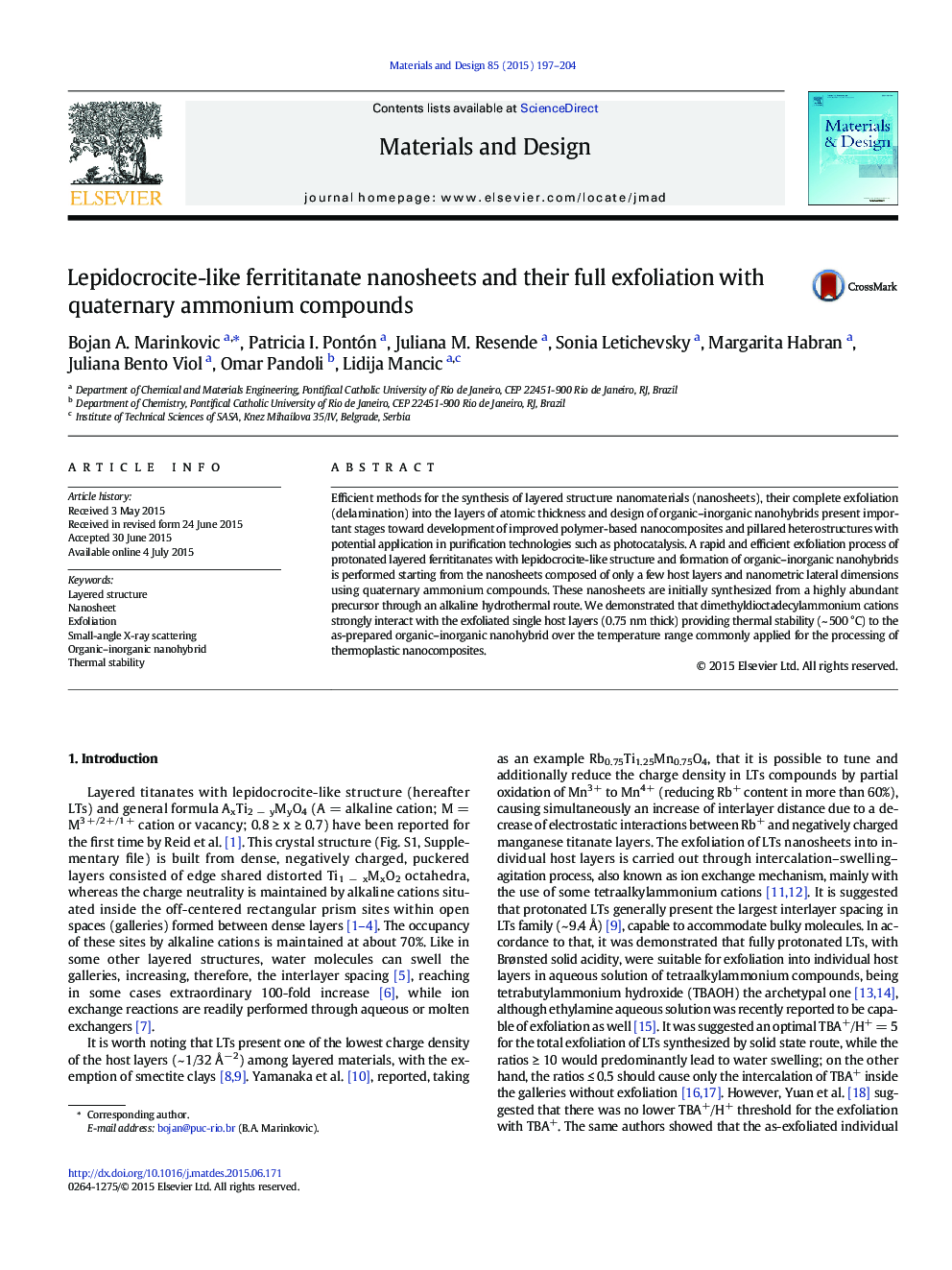| Article ID | Journal | Published Year | Pages | File Type |
|---|---|---|---|---|
| 828288 | Materials & Design | 2015 | 8 Pages |
•Nanosheets composed of a few host layers and nanolateral dimensions are synthesized.•Nanosheets are rapidly exfoliated by a 2C18 salt into single-layered sheets.•Dimethyldioctadecylammonium cations strongly interact with ferrititanate host layer.•Organic–inorganic nanohybrid with noteworthy thermal stability (~ 500 °C) is obtained.
Efficient methods for the synthesis of layered structure nanomaterials (nanosheets), their complete exfoliation (delamination) into the layers of atomic thickness and design of organic–inorganic nanohybrids present important stages toward development of improved polymer-based nanocomposites and pillared heterostructures with potential application in purification technologies such as photocatalysis. A rapid and efficient exfoliation process of protonated layered ferrititanates with lepidocrocite-like structure and formation of organic–inorganic nanohybrids is performed starting from the nanosheets composed of only a few host layers and nanometric lateral dimensions using quaternary ammonium compounds. These nanosheets are initially synthesized from a highly abundant precursor through an alkaline hydrothermal route. We demonstrated that dimethyldioctadecylammonium cations strongly interact with the exfoliated single host layers (0.75 nm thick) providing thermal stability (~ 500 °C) to the as-prepared organic–inorganic nanohybrid over the temperature range commonly applied for the processing of thermoplastic nanocomposites.
Graphical abstractFigure optionsDownload full-size imageDownload as PowerPoint slide
